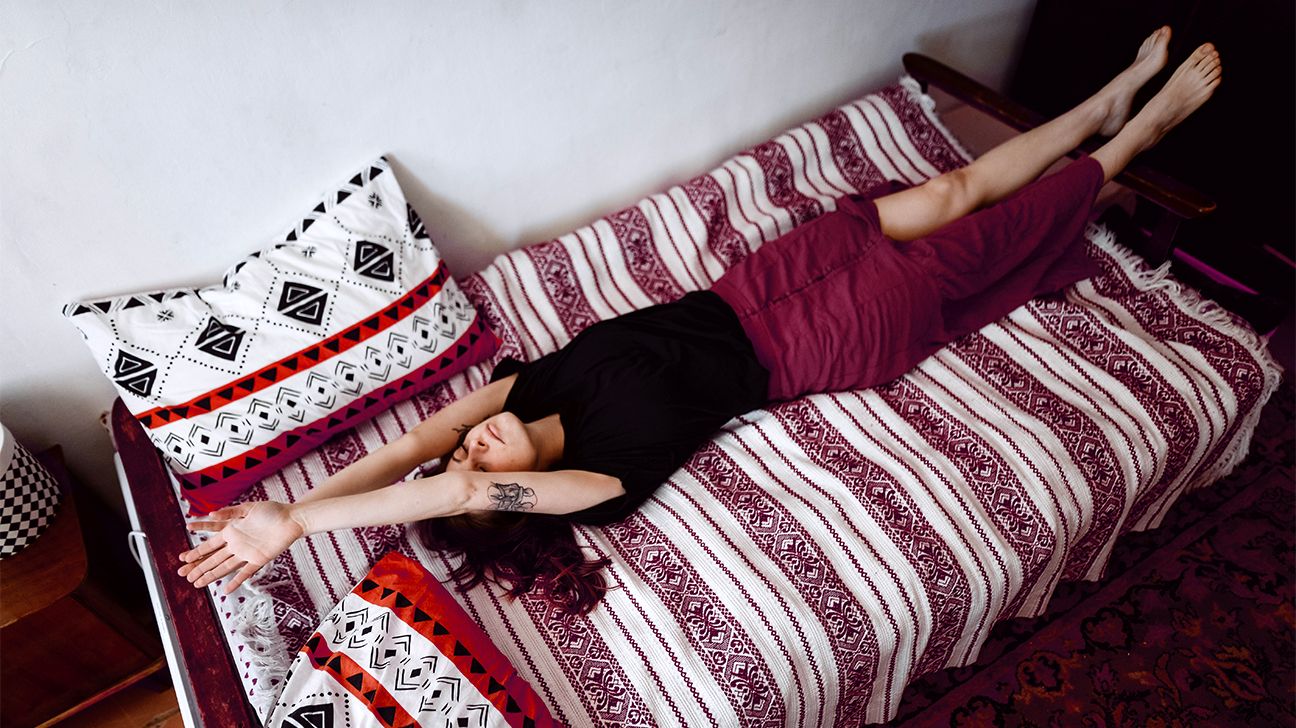Many tout meditation as a remedy for anxiety, and rightfully so. But in moments of panic where anxiety already feels like it’s past the point of no return, coping techniques like meditation or even breathing exercises might not be as helpful, especially if those types of exercises are not your thing.
Some people need techniques that are a little more physical or sensory-oriented. Here are eight small and simple physical ways you can calm your anxiety, and get your mind and its racing thoughts back into your body and reality.
When you experience anxiety, your body goes into fight-flight-freeze mode. Chemicals including adrenaline and cortisol are released into your body, causing physical agitation and further fueling the anxiety.
According to Dance and Movement Therapist Melissa Meade, you can literally shake off the anxiety by moving your hands, arms, legs — wherever you’re feeling tension. You can also try stomping, punching a pillow, or yes, dancing.
“Movement inherently releases tension,” she says. “When animals reach the freeze state, the way they get out of it is to shake it off. They literally shake every part of their body.”
While we adults may not have the same carefree fun playing with toys as kids do, we can use them to our advantage to calm anxiety.
Toys that require your focus, but are short of being frustrating, work to distract you from your anxiety. They can also be soothing and grounding, since they’re both tactile and visual.
Psychiatrist Sean Paul, MD recommends using a fidget toy, such as an infinity cube (though there are plenty of other fidget toys on the market). Alternatively, you could use something like Legos or a desktop sand zen garden.
Anti-anxiety toys on Amazon
If you’re looking for a different kind of sensory experience to get you out of your panic, Eric Zink, founder of mental health non-profit Dr1ven Together, says one of his most effective grounding techniques is biting straight into a lemon, peel and all.
The textures and the bitterness act as a shock to your system, and will direct your thoughts to the taste instead of the anxious thoughts in your head.
Don’t want to bite directly into a full lemon? You can cut one into wedges and bite into those and suck out the bitter juice. Alternatively, many people like to use sour candies such as Warheads for the same purpose.
Mammals — aka us — experience a calming response when diving into cold water. DBT therapist Nikki Winchester recommends submerging your face in a bowl of cold water, or if that’s too uncomfortable for you, just submerging your forehead. Try to stay under for 30 seconds.
“This tells your brain that you are diving underwater and induces the dive response, causing activation of your parasympathetic nervous system (PNS),” she says. Activation of the PNS is associated with relaxation. The response slows down your heart rate, which is particularly helpful if you’re having a panic attack and your heart won’t stop racing.
Disclaimer: If you have a low base heart rate or have heart conditions, consult your doctor before trying this.
Anxiety sufferer Millie K., 23, uses a unique approach to help to find relief with anxiety. She touches the pad of her thumb to the pad of each other finger (as in a pinching motion) while she spells words out loud. Each finger is for a different letter.
She spells words of things that are comforting to her or things she likes, such as chocolate cake. When engaging in this practice, Millie says she is able to focus on the spelling and the finger tapping, which distracts her from spiraling thoughts.
You’ve heard of grounding, but have you ever tried grounding by way of lying on the floor? Danielle C., 28, likes to lie down flat on the floor, preferably a tiled bathroom floor, when she’s having anxiety attacks.
“The slight shock of the cold tiles on my skin helps me to relax because it helps me feel like I’m not overheating, while also providing a feeling of comfort and stability,” she says.
She does this in minimal clothing so more surface area touches the tile, and also because when her claustrophobia is triggered, the clothes feel suffocating.
While it might feel counterintuitive to exercise in the moment, psychiatry resident Patricia Celan, MD says that “by actively doing high intensity exercise that boosts the heart rate, [people] are able to take control of their physical symptoms.”
You don’t even need to go anywhere to do this. Just get up out of your seat and do jumping jacks, burpees, fake jump rope, whatever you choose.
Celan says this can be especially helpful for people with PTSD. Since they’re not able to control or change the past, being able to regain a sense of control in the moment is key to calming down, she says.
Bilateral stimulation, or side-to-side stimulation, is a technique used in EMDR therapy that can help to induce a relaxation response. Sophia V., 26, who has OCD and anxiety, says she’s had success by tapping her hands on opposite shoulders in an alternating pattern. You can tap alternate arms or legs as well.
The same techniques don’t work for everybody. It might take some experimenting to figure out which of these coping techniques works for you. Alternatively, you might need to use a couple of them to help you calm down. Everyone’s anxiety is different, but there’s one thing that’s universal: Everyone deserves relief and the ability to calm down.


